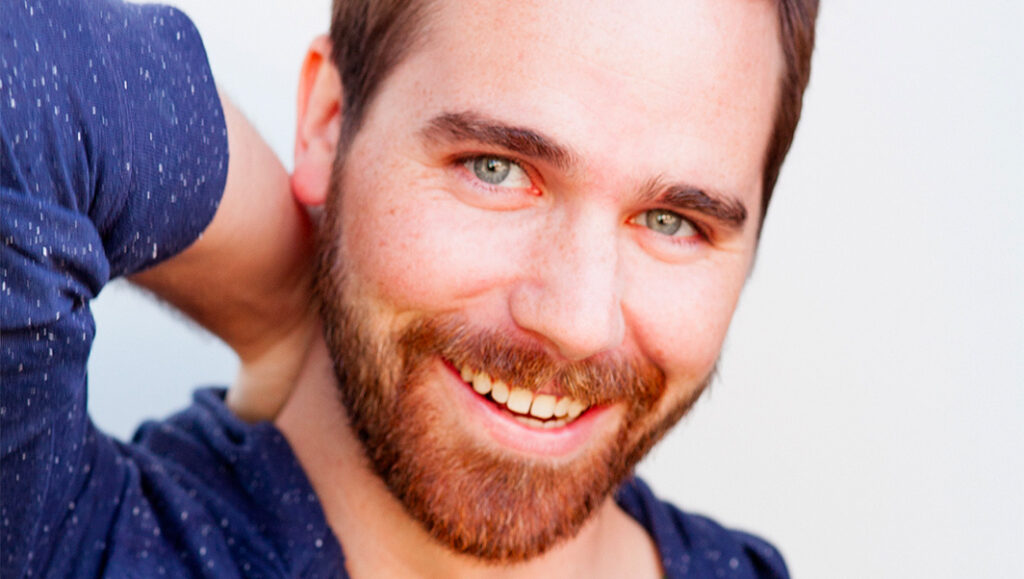SXSW 2023: Writer-Director Dillon Tucker Chats About the World Premiere of His Film Pure O

Dillon Tucker is an acclaimed storyteller who is making his directorial debut with his must-see feature film, Pure O.
Premiering at SXSW, Pure O follows Cooper Ganz’s seemingly perfect life as it quickly unravels when he is diagnosed with a crippling form of OCD called Pure Obsessional. This often misunderstood illness forces him to question his identity and sanity, all while trying to keep it together for his fiancée, family, and co-workers. As he learns to accept his disease, and the vulnerability that comes along with it, his world starts to open up. The addiction recovery clients he works with at a high-end Malibu drug rehab return the favor and help Cooper through his darkest hour.
Pop Culturalist was lucky enough to speak with Dillon about Pure O, why it’s a deeply personal story to him, and finding the strength in vulnerability.
PC: Your film is making its world premiere at SXSW. Tell us about Pure O and the inspiration behind it.
Dillon: Pure O is autobiographical. It’s based on my life. It’s about an aspiring screenwriter/musician who has to grapple with Pure O, which is Pure Obsessional. It’s a form of OCD that only has a mental manifestation. He’s coming to grips with his diagnosis. It’s also much more universal than that. It goes into his life. It’s a story about mental health and how it also affects people in his life around him. It’s about somebody going through their darkest hour and battling a Pure O diagnosis.
PC: This film is bringing much-needed awareness to OCD and how it’s often misrepresented in film and television. We see that reflected in the protagonist’s journey when he’s initially diagnosed. Why do you think the media has continued to perpetuate these misconceptions? Why was it so important for you to reshape this narrative?
Dillon: Knowledge is power. I don’t fault anybody. It’s really misunderstood. I can’t sit here and pass judgment on anybody because I had late onset, so I was going into my thirties when I got diagnosed with it. I had no idea. I didn’t know it was a thing. I realized that so many people within the therapeutic community don’t really understand Pure O. The average length that somebody is in talk therapy is sometimes up to eight years. Talk therapy makes it worse. People are just stuck in talk therapy thinking that they need to talk about things. It’s just making it worse because they’re just compulsing and obsessing about something and they’re not actually getting better. They’re making it worse.
Even within the community that deals with this, it’s misunderstood. To have the expectation that the general public is going to understand that is a tough ask, which is a huge reason why I made the film. I wanted it to be about a lot more than just mental health. I also wanted it to be subversive. I wanted to paint a picture of what it really looks like when somebody’s dealing with therapy and dealing with this diagnosis and show people what it means to destigmatize it. When you hear what Pure O is, it sounds really intense, and it is. It’s a struggle. It’s debilitating at times, but ultimately, OCD attacks the things that you love the most.
Typically, people with OCD have such beautiful brains. I found that out in group therapy. People are so empathetic. That’s a common theme. People feel so strongly. What happens is that you’re having these intrusive thoughts that are completely against your own sense of self-identity. People who are in there have such strong self-identity involving empathy, caring, and all these things. So when you have these thoughts, whether it’s pedophilia OCD or harm OCD or whatever it is, it’s just thoughts. That’s the first rule of treating OCD: the content doesn’t matter. It has nothing to do with the thoughts at all. There’s no such thing as OCD thoughts. They’re just human thoughts. The OCD comes from misinterpreting those thoughts. You’re not able to cognitively restructure the thoughts in a proper way. You have all these cognitive distortions that are at play with an OCD brain, but the thoughts themselves are human. We all have them.
I really did want to be subversive. I did want to show that, and I hope it holds up. Before I made the film, I had therapists read the script. I obviously have my own experiences, but I wanted it to be true to life where everything that happens in the film is true to how it really is. I would love it if people see this film and are able to see parts of themselves on screen. I hope that somebody who’s sitting there suffering in talk therapy is able to see a film like this and recognize aspects of themselves and are able to go to their own therapist and bring it up and say, “Hey, I saw this movie. It hit close to home. It feels like this might be a thing. What do you think? Can we talk about it?” If this film can help anybody get the help they need, that would be the biggest win for me.
PC: There are so many standout performances by the ensemble. As you were writing these characters, did you have these particular actors in mind? What was that casting process?
Dillon: Not during the writing process. I don’t tend to write like that. I tend to focus on the story. I don’t tend to think of actors when I’m writing things. I’m fortunate in that I went to drama school. I’ve been an actor for almost twenty years. I’ve gotten to know so many talented individuals that I started to think about as if I was casting it for myself. I started to think about everybody that I knew and all the different people that would be good for different roles.
I also had a unique plan for casting. I cast a real-life couple to play the leads in the film. The female lead’s parents are a real-life couple. So we had two real-life couples in the film. Then I also cast non-actors in the therapy group, so there are real-life OCD patients who aren’t actors. At the drug and alcohol rehabilitation center, the characters that work there are also real-life counselors who aren’t actors. I had a plan for how I wanted to cast it and what I wanted to do, but in terms of specifics, I didn’t quite have that. I was piecing that together after I wrote the script.
PC: The film really highlights the strength of vulnerability. As a filmmaker, how were you able to create the space and environment for your cast to explore those different topics and universal themes? How beneficial was it for you having worked in front of the camera as an actor for twenty years as well?
Dillon: It was super beneficial. I told all my actors, “Listen, my keyword is ‘unsentimental.’ I want to be unsentimental with the material. I want to present it as it is. I want to try to take as little of a viewpoint and judgment as possible. I want to show people that this is what happens.” I asked them to bring as much of themselves as possible in terms of the themes of the project: vulnerability and courage. I challenged them to try to find where the character and themselves were most aligned and to lean into that and bring as much of themselves as they could, not as actors but as humans. I wanted them to be wary of acting and to stay away from acting or delivering a message. I wanted them to be as naturalistic as possible. That’s what we were going for.
I told them if they would do that then I would try to set up everything to be performance-first because that’s my taste. That’s what I like in film as well. Everything that I did as a director and working with my cinematographer was to light the space and not light the individual actors. I wanted to light the space and let them move. I wanted to free them up so that they could improv in and out of a scene if it was called for. If they were looking at some piece of language and it didn’t feel right on their tongue, I wanted them to feel like they could say something with the same intention but differently. I wanted to encourage them to follow that.
That’s all I did. I tried to create a playground for them to come in and do their thing and set up the rules of engagement for them in a way that allowed them to be free. We shot the entire film handheld. That was a choice. That was also to create movement for the actors so that we could follow them around with the space lit. Everything that I do as a director, especially within a film like this where you’re going for such a naturalistic tone, is to allow my actors the space to have their performances at the forefront of what we are doing.
PC: You also wrote, directed, produced, and edited the film. Did anything surprise you about the experience? What was the biggest thing you learned about your craft?
Dillon: I learned a ton. I learned that it really works well when there’s cohesion. Film is an incredibly collaborative art form. It takes so many people bringing different things, but I do think that there’s something about having one throughline of somebody’s perspective from beginning to end. It adds a natural cohesion to it where things don’t have to be lost in translation when I’m trying to communicate my vision to an editor or communicate my vision in a certain way. Managing that myself from beginning to end solidified my viewpoint that that’s what I want to continue to do as a director. I think it really serves a film well when you have that throughline.
PC: You’re also a singer-songwriter. You were able to incorporate your own music from a pivotal time in your life into this film. Why was that important to you and the overall authenticity of this project?
Dillon: Well, it’s an autobiographical film and the whole project itself is incredibly meta, but the characters that are based on my life are musicians and they’re playing music. I intentionally chose music that I was writing at that point in my life because there’s no way I was going to be able to go back and recreate that as well as I possibly could have when I was right in the middle of it. I wanted to highlight that because I’m not necessarily a confessional songwriter, but there’s something in the language and the things that I was speaking to that were very unique to what I was experiencing in my life at that point in time. It was the right choice. It’s almost as though the language and the songs in the film are an inner narrative of the character and where his head is at throughout the film. Those were in there from the first draft. I intentionally was very specific with the writing and the songs that I chose because they work as internal monologues for the characters. It’s almost a diary for the character as the film goes along.
To keep up with Dillon, follow him on Instagram. Make sure to catch Pure O at this year’s SXSW.


Discussion about this post